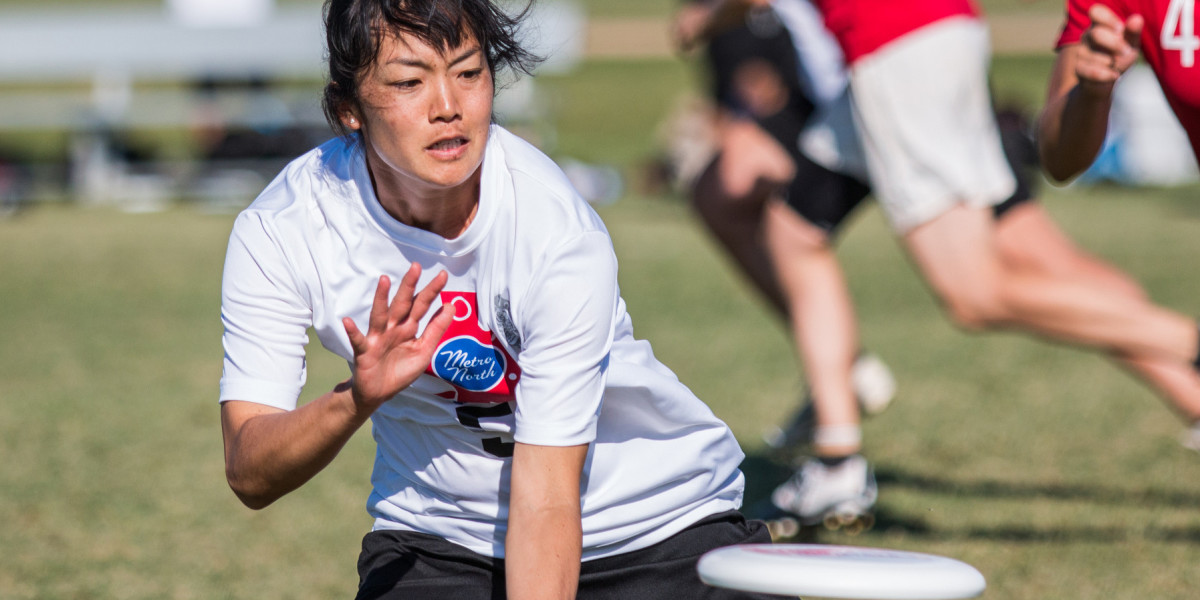 Daniel Thai of Ultiphotos. 2015 USAU Club National Championships.
Daniel Thai of Ultiphotos. 2015 USAU Club National Championships.
Some of what we do in The Ultimate Athlete Project feels counterintuitive. It can be unnerving to be doing workouts that are different than what you’ve done before or what your friends are doing. I occasionally have athletes email me a month or two into the program, worried that they might not be doing enough to get results.
When I went into my first tournament I was afraid I wouldn’t last because I hadn’t run over 200 yards at a time in over 3 months. But not only did I last, I played in the cup all weekend and felt strong and fast until late in the day Sunday. Even more miraculously, I woke up Monday morning barely feeling sore at all! I could not remember that ever happening in my entire college career.
So what are the principles in UAP that allow us to work smarter and not harder? Principles one and two are about timing and planning. The third principle guides exercise and workout selection.
- Supercompensation
It’s easier to understand with a drawing, so I’ll point you to one of my more popular:
Basically, after a type of training stress, your body has a period of reduced performance capability (If you tried to repeat the same workout immediately, you would obviously not perform as well, right?) And then your body recovers, adapts, and you’d be able to do the same workout more easily. So the key is to time your workouts for these supercompensation periods so that you have maximal adaptation.
Where this shows up in training for ultimate is that many players time intense workouts too close together. Without full recovery, your training stimulus is too low in the supercompensation curve and you don’t get maximal adaptation. You may even wear yourself out over the long term. Especially when it comes to conditioning, UAP workouts are often shorter than what many players are used to. This freaks people out at first.
Be more efficient with your training by timing our workouts for maximal adaptation per workout NOT maximum output per workout.
- Periodization
The most common mistake I see is that players want to improve everything at once. This works up to a point, but eventually you’ll hit a plateau. For example, when your body has to choose between adapting for endurance and adapting for more power, it always chooses endurance. This is why training for endurance limits gains in power.
With proper periodization we eliminate the conflict of interests by focusing on one athletic quality at a time. The conflict of interest can also be handled by working on complementary athletic qualities like speed and power.
The body adapts best if you focus on one main athletic quality you’re trying to improve. Rarely do you want to completely neglect any aspect of your training, but you always want to have a clear emphasis.
If you’ve been on a team that does track workouts, you may have experienced attempts at this. You start out doing 400’s, then 200’s then gradually decrease the distances. The thought is: endurance first, then speed. However, if you don’t have speed in the first place, are you really training to help that speed last longer? The more common current thinking in strength and conditioning is to develop speed and power first, then speed and power endurance.
In the Ultimate Athlete Project we alternate strength-focused phases with power-focused phases through the off season. Late off season is a good time for speed and jumping work. Pre-season is when you should focus more on conditioning and move to more sports specific work.
It can make make you feel a bit insecure to neglect conditioning in the off season phases. But it’s important to realize that it’s impossible to improve all athletic qualities at the same time. Focusing on one athletic quality at a time and neglecting others for a time is counterintuitively the way to break through training plateaus and reach a new level of performance.
- The SAID Principle
The acronym “SAID” stands for “Specific Adaptation to Imposed Demand”. This principle simply states that your body adapts very specifically to the training stimulus you give it.
The SAID principle is the foundation of a lot of functional performance strength training. It does not mean that every movement looks like something you would do on the field. It does mean that an emphasis on single leg strength training is important because in sport the legs have to operate independently and bear load asymmetrically. Running and jumping occur with one foot being in contact with the ground at a time. Changing direction requires an asymmetrical load on the legs in the turn. Lunging and pivoting also require the legs to work independently in a coordinated fashion.
The SAID principle also shows up in ultimate-specific conditioning. When you plan your training, consider both the movement demands and the metabolic demands of ultimate. I will never ask my athletes to go out and run a few miles. Instead we do a lot of interval training and we make sure that our conditioning includes a lot of change of direction.
The above principles should be the foundation of any training program with the aim of athletic performance. Applying the first two principles to program planning can be complex. If you’d like the planning done for you with these principles in mind, The Ultimate Athlete Project is open until the end of the day Friday.











Comments Policy: At Skyd, we value all legitimate contributions to the discussion of ultimate. However, please ensure your input is respectful. Hateful, slanderous, or disrespectful comments will be deleted. For grammatical, factual, and typographic errors, instead of leaving a comment, please e-mail our editors directly at editors [at] skydmagazine.com.